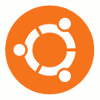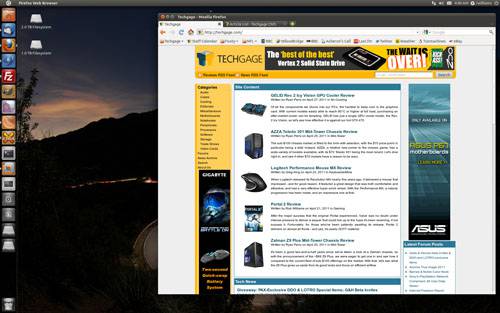- Qualcomm Launches Snapdragon 4 Gen 2 Mobile Platform
- AMD Launches Ryzen PRO 7000 Series Mobile & Desktop Platform
- Intel Launches Sleek Single-Slot Arc Pro A60 Workstation Graphics Card
- NVIDIA Announces Latest Ada Lovelace Additions: GeForce RTX 4060 Ti & RTX 4060
- Maxon Redshift With AMD Radeon GPU Rendering Support Now Available
An In-Depth Look at Ubuntu 11.04

After months of anticipation, Ubuntu 11.04, codenamed ‘Natty Narwhal’, has launched in its final form. The big news this time around is that the OS ships with Canonical’s ‘Unity’ desktop environment as default – a large risk on behalf of the company. To see if that risk paid off, let’s take an in-depth look to see what Unity’s made of.
Page 1 – Introduction
Like few others before it, the launch of Ubuntu 11.04 has been trailed with immense hype – both good and bad. When Canonical last fall announced its plans to make its ‘Unity’ desktop the default with 11.04, codenamed ‘Natty Narwhal’, some were excited at the potential of a “fresh” environment, while others were upset to see GNOME get kicked to the curb. I belonged to the former camp. As I’ve never been a real fan of GNOME, the thought of another environment built atop the same base was intriguing.
Much of the focus of 11.04 from both us and other outlets has revolved around Unity, but it’s for good reason. This release marks the first time ever that the primary edition of Ubuntu has shipped without GNOME as its default desktop, and because Unity as a whole isn’t even that mature (in terms of total development time), Canonical took a huge risk to ship it as the default here.
When a drastic change like this is made to one of the most popular distributions out there, talk is bound to reach a certain level of overkill.
But, while Unity has been the dominating focal-point of 11.04’s launch, the release does bring a lot of changes, upgrades and introductions, as we’d expect. One of the more modest, and perhaps lesser noticeable changes, is that Ubuntu will no longer feature a “Netbook Edition”. This is due to the fact that the “Ubuntu Desktop Edition” (now simply referred to as ‘Ubuntu’), utilizes the same desktop environment. Given this, two versions no longer had reason to co-exist.
With regards to software, 11.04 features an up-to-date kernel, 2.6.38.2, which means the latest drivers for all supported hardware is as up-to-date as it can get. This kernel also introduces native support for AppArmor, and also opens up support for Intel’s Intelligent Power Sharing. Other updated system software include GCC (4.5), Xorg (1.10.0), Mesa (7.10.1), Python (2.7), dpkg (1.16.0-pre), Upstart (0.9.7-1) and more.
A couple of notable software upgrades or replacements have also been made. Mozilla’s Firefox has been upgraded to 4.0, as expected, while Rhythmbox has been dropped in favor of Banshee, and OpenOffice.org dropped in favor of the more “free” LibreOffice.
There have of course been a slew of other modifications made, and upgrades/changes to do with Ubuntu’s own forks, so for a lot more information, I’d recommend reading through the official release notes page. For those who’d like a reference to the official MD5s to make sure their download is 1:1 with the official image, here are the hashes for both the x86 and x64 editions:
- 7de611b50c283c1755b4007a4feb0379 *ubuntu-11.04-desktop-amd64.iso
- 8b1085bed498b82ef1485ef19074c281 *ubuntu-11.04-desktop-i386.iso
The other MD5s and direct download links can be found here.
As I did with openSUSE 11.3’s launch, I set aside my native Gentoo install in favor of using Ubuntu 11.04 full-time since beta 2 hit the scene. To my surprise, I wasn’t crying to go back to my usual desktop after the first couple of days, and instead found there to be real value within Unity. That doesn’t mean it’s perfect though – far from it. But the fact that I’ve been using it full-time for a two weeks without a show-stopper is rather impressive to me, and a good sign of things to come.
A lot of this article is going to revolve around the Unity desktop as one might expect, but for the sake of covering the the most basic of Ubuntu practices, the installation, I’ll be taking a quick look at that on the next page.
Support our efforts! With ad revenue at an all-time low for written websites, we're relying more than ever on reader support to help us continue putting so much effort into this type of content. You can support us by becoming a Patron, or by using our Amazon shopping affiliate links listed through our articles. Thanks for your support!






